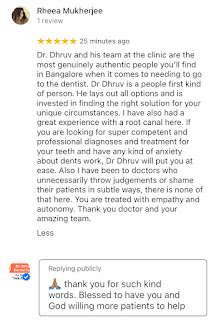E not equal to mc2
Navigational AI can have various applications in dentistry, including improving treatment planning and guiding dental procedures. In terms of treatment planning, navigational AI can assist dentists in analyzing and interpreting radiographic images, such as X-rays or CBCT scans, to identify anatomical structures and determine optimal treatment paths. It can also help in virtual surgical planning for procedures like dental implant placement, orthognathic surgery, or endodontic treatment.
During dental procedures, navigational AI systems can provide real-time guidance and feedback to dentists, enhancing the precision and accuracy of their interventions. For example, during dental implant surgery, navigational AI can assist in determining the ideal implant position and angulation, ensuring proper placement and reducing the risk of complications. Similarly, in endodontics, navigational AI can aid in determining the precise location and trajectory of root canals, facilitating more effective treatment.
Title: Navigational AI and Its Potential Applications in Dentistry: Insights from Dr. Dhruv Subramanian
Abstract:
During the recent lockdown, our family engaged in a make-believe science game, which led to an intriguing discovery related to Einstein's theory of relativity and its implications for space travel. This article presents the dialogue between a father and his son, exploring the concept of mass-energy equivalence and the role of light particles. The father's proposition of LE=E/m (c^2 = E/m) sheds light on the possibility of accelerating or de-accelerating photons, challenging the notion of the constant velocity of light. This theoretical understanding opens doors for potential advancements in dentistry, particularly in the development of more efficient LASER machines. The application of navigational AI in dentistry is also discussed, highlighting its potential in treatment planning and real-time guidance during dental procedures.
1. Introduction:
Living in close quarters during the lockdown, our family engaged in a stimulating science game that led to a captivating discussion on Einstein's theory of relativity. In this dialogue, Dr. Dhruv Subramanian introduces his son to the concept of mass-energy equivalence and its connection to the velocity of light. The subsequent exploration paves the way for potential breakthroughs in dentistry, supported by navigational AI and its applications in treatment planning and real-time guidance during dental procedures.
2. Mass-Energy Equivalence and the Velocity of Light:
Dr. Subramanian explains Einstein's equation, E=mc^2, where E represents energy, m represents mass, and c represents the constant velocity of light (3.0 x 10^8 m/s). The discussion focuses on the significance of m/s, which stands for meters per second, representing the rate at which distance is covered within one second.
3. Time Dilation Effect and Understanding Mass:
The conversation delves into the research conducted by Dr. Subramanian on aging and the time dilation effect observed in outer space. The son begins to question the constancy of the velocity of light when considering the variation in seconds. This leads to a realization that if one were to hypothetically sit on light particles (photons), they would possess a minute fraction of mass. Dr. Subramanian draws parallels with Newton's second law, F=ma, explaining that acceleration is directly influenced by force and mass.
4. LE=E/m: Rearranging the Equation for Clarity:
Dr. Subramanian proposes LE=E/m, a rearrangement of E=mc^2, where LE represents light energy or the velocity of light. By emphasizing the work done on photons, he suggests the possibility of accelerating or de-accelerating light through the energy applied. This challenges the notion of the constant velocity of light and holds implications for the development of more efficient LASER machines in dentistry.
5. Navigational AI in Dentistry:
The article further explores the application of navigational AI in dentistry, particularly in treatment planning and real-time guidance during dental procedures. By utilizing navigational AI systems, dentists can enhance their accuracy and precision in various interventions. For instance, during dental implant surgery, navigational AI assists in determining optimal implant positioning and angulation, reducing the risk of complications. Similarly, in endodontics, navigational AI aids in identifying the precise location and trajectory of root canals, improving treatment outcomes.
6. Conclusion:
Dr. Subramanian concludes that the theoretical possibility of traveling faster than the speed of light challenges the human race to explore interstellar travel within a human lifespan. While acknowledging the uncertainties, he highlights the potential advancements in dentistry by integrating navigational AI and the reimagined understanding of the velocity of light. This article serves as an invitation for further exploration, research, and development in the pursuit of theoretical possibilities and practical applications in dentistry.
Acknowledgments:
The authors would like to acknowledge Subhash Narayanan, Ph.D., for his expertise in Lasers from Cochin University (CUSAT) in 1982, and Rema Subramanian, MA Psychology and Registered Yoga Teacher, for their valuable editing contributions to the physics portion of this article. Along with chatGPT addition of navigational AI Information and editing grammar



Comments
Post a Comment